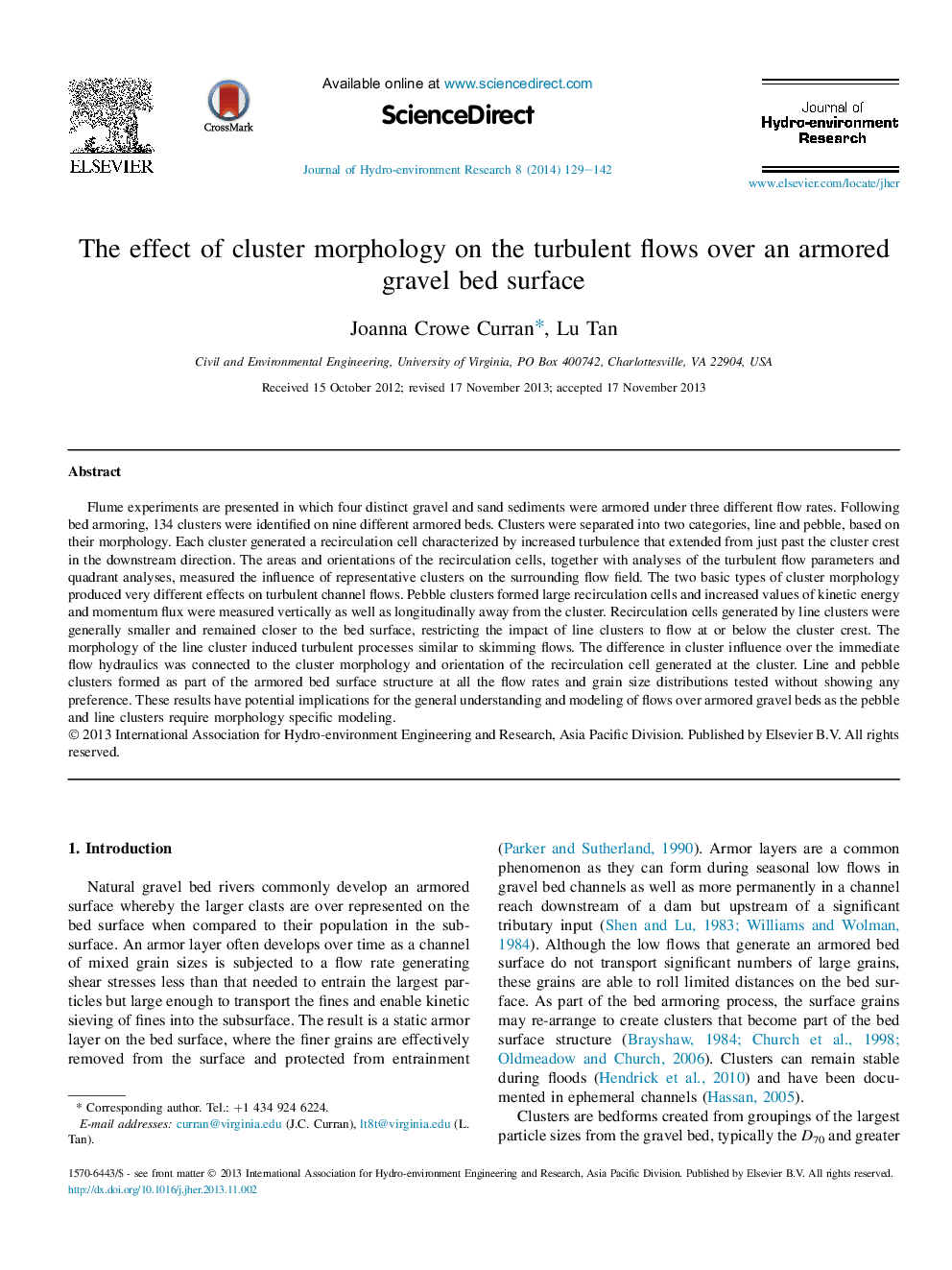| Article ID | Journal | Published Year | Pages | File Type |
|---|---|---|---|---|
| 4493687 | Journal of Hydro-environment Research | 2014 | 14 Pages |
•Clusters form with one of two distinct elevation morphologies: either as a pebble cluster or a line cluster.•Cluster elevation morphology type impacts the relative depth of the cluster.•Cluster morphology influences the turbulent recirculation cell generated downstream.•Clusters represent a bedform scale impact on turbulent flow parameters.
Flume experiments are presented in which four distinct gravel and sand sediments were armored under three different flow rates. Following bed armoring, 134 clusters were identified on nine different armored beds. Clusters were separated into two categories, line and pebble, based on their morphology. Each cluster generated a recirculation cell characterized by increased turbulence that extended from just past the cluster crest in the downstream direction. The areas and orientations of the recirculation cells, together with analyses of the turbulent flow parameters and quadrant analyses, measured the influence of representative clusters on the surrounding flow field. The two basic types of cluster morphology produced very different effects on turbulent channel flows. Pebble clusters formed large recirculation cells and increased values of kinetic energy and momentum flux were measured vertically as well as longitudinally away from the cluster. Recirculation cells generated by line clusters were generally smaller and remained closer to the bed surface, restricting the impact of line clusters to flow at or below the cluster crest. The morphology of the line cluster induced turbulent processes similar to skimming flows. The difference in cluster influence over the immediate flow hydraulics was connected to the cluster morphology and orientation of the recirculation cell generated at the cluster. Line and pebble clusters formed as part of the armored bed surface structure at all the flow rates and grain size distributions tested without showing any preference. These results have potential implications for the general understanding and modeling of flows over armored gravel beds as the pebble and line clusters require morphology specific modeling.
